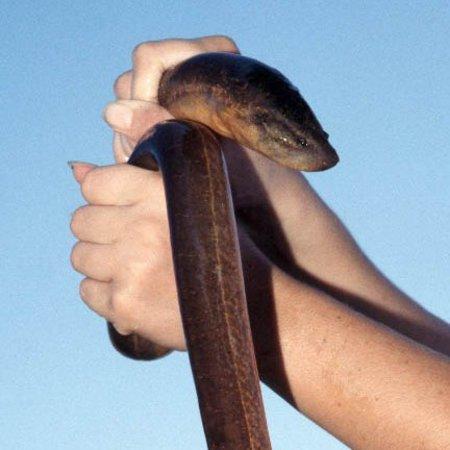Florida’s new “Don’t Let It Loose” Billboard Campaign is further evidence that the National Park Service and other federal and state land management agencies have finally gotten serious about public education as a tool for invasive species control. You could say this is a classic example of locking the barn door after the horse is stolen, but it’s probably better to think of it as better late than never.
Florida’s non-native species problems are worsening at a frightening pace. Nowhere is this more evident than in the Everglades in general and Everglades National Park in particular. Few protected areas on earth – and certainly none within the National Park System -- have been assaulted by so many non-natives, so dangerously, and in so short a period of time.
The list of non-native plants, animals, and fish that have already established toeholds or territories in the park is long and depressing. It includes such horror stories as the Burmese python, the Asian swamp eel, and the Old World climbing fern, to name just a few. Individually, these invaders are very problematic. Collectively, they threaten to badly destabilize the park’s already overstressed ecosystems.
Whether they might be able to do that to the point of ruination is a matter of debate. Some wildlife biologists have remained reasonably optimistic that the plant and animal invaders can be suppressed or in some cases even eliminated with comprehensive programs employing manual, chemical, biological, and genetic controls in combination with traditional methods such as trapping and hunting. Other experts are less sanguine, with some even suggesting that non-natives will severely inhibit restoration efforts or perhaps even lead to an ecological Armeggedon for the native plant and animal communities.
The crux of the matter is this. If the Park Service and its federal, state, and private allies are to have any hope of winning the battle against the non-natives, they will have to pull out the stops and work much harder and smarter.
One area that needs much more attention is public education. Much of the public remains poorly informed about the hazards posed by invasive species, and many people continue to add to the problem by accidentally or intentionally releasing non-native plants and exotic pets into the wild. Although heightening public awareness and understanding of invasive species problems and their prevention cannot make existing problems go away, it can at least help slow down the pace of new introductions, enlist the public’s help in dealing with existing invasive species problems, and lessen the burden of wildlife managers who must, in a manner of speaking, run faster and faster these days just to stay in place.
To help things along, the Park Service and its state and federal land management partners recently unveiled a year-long campaign that will use roadside advertising in Florida to highlight the invasive species problems of the Everglades and enlist public support for control programs.
Over the next twelve months, a statewide network of billboards donated by the Florida Outdoor Advertising Association and produced by the U.S. Army Corps of Engineers will feature select “un-wanted” nonnative species and advise viewers to “Don’t Let It Loose.” Billboard viewers will be directed to www.DontLetItLoose.org, where visitors can learn more about invasive species, report sightings of nonnatives, or find help for unwanted exotic pets.
With apologies to the fervent “litter on a stick” billboard-haters among us, I hope that the “Don’t Let It Loose” campaign lives up to expectations.




Comments
Steve Redden misdirected a comment that belongs in this thread. It was sent in reply to an article on Chattanooga National Cemetery, but should have been here. It is copied below, with my response. BJ
steve redden (not verified)
On December 30th, 2009
Bob,
I found your piece on the Outdoor Advertising Assn's donation of space to raise public awareness about invasive species "escaping" from Florida. I want to say thanks for the nod to the "litter on a stick" folks in whose camp I place myself - just for the record.
I am interested in any information that you can provide about the size, location, and time increments that they will be donating during the coming year. I am interested in trying to maintain a balanced view about both sides of the "billboard battle" that is raging - worldwide, actually - and want to be sure I understand accurately the scope of their contribution. Any effort on their behalf to fight this problem, of course, is commendable.
Thank you,
Steve
Traveler isn't affiliated with the sponsoring organizations or the park, Steve. You need to contact people associated with the "Don't Let It Loose!" campaign. Let me suggest you begin by visiting this site. The contact link is at the upper right on the page. Good luck.